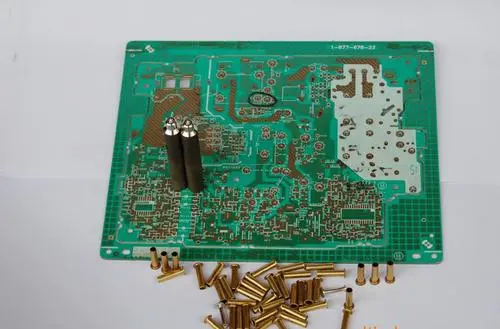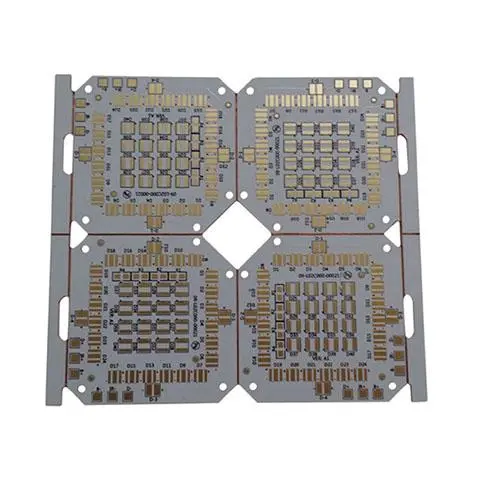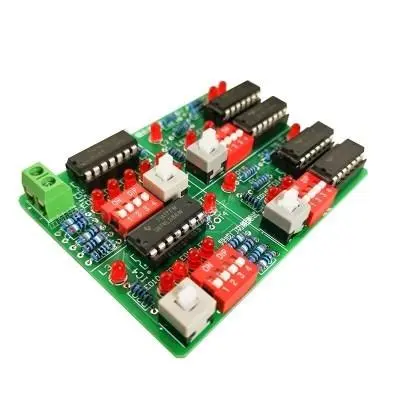
Copper sulfate electroplating plays an extremely important role in PCB electroplating. The quality of acid copper electroplating directly affects the quality of copper plating layer and related mechanical properties, and has a certain impact on subsequent processing. Therefore, how to control the quality of acid copper electroplating is an important part of PCB electroplating, and is also one of the processes that are difficult to control in many large factories. Based on years of experience in electroplating and technical services, the author preliminarily summarizes the following, hoping to enlighten electroplating operators in PCB industry. Common problems in copper sulfate electroplating mainly include the following:
Coarse electroplating;
Electroplating (plate surface) copper particles;
Plating pits;
The board surface is white or uneven in color.
In view of the above problems, some summaries are made, and some brief analysis, solutions and preventive measures are carried out.
Rough electroplating:

Generally, the plate angle is rough, most of which is caused by large electroplating current. You can lower the current and use a card meter to check whether the current display is abnormal; The whole board is rough and generally does not appear, but the author has met with the customer once, and later found out that the temperature was low in winter and the content of polish was insufficient; In addition, sometimes the surface of some reworked film shedding boards is not cleaned.
Copper particles on electroplating plate:
There are many factors that cause copper particles on the board surface. It is possible to electroplate copper on PCB during the whole process of copper deposition and pattern transfer. The author has met the copper grains on the board caused by sinking copper in a large state-owned factory.
1. Copper particles on the plate surface caused by copper precipitation process may be caused by any copper precipitation processing step.
1) Alkaline degreasing will not only cause the roughness of the board surface, but also the roughness in the hole when the water hardness is high and the drilling dust is too much (especially when the double-sided board is not filtered properly), but generally it will only cause the roughness in the hole, and the slight pitting dirt and micro corrosion on the board surface can also be removed.
2) There are mainly several cases of micro etching:
The quality of hydrogen peroxide or sulfuric acid used as the micro etchant is too poor, or ammonium persulfate (sodium persulfate) contains too much impurities. It is generally recommended that it should be at least CP grade. In addition, industrial grade will cause other quality failures; The copper content in the micro etching groove is too high or the temperature is too low, which causes the slow precipitation of copper sulfate crystals; The tank liquid is turbid and polluted: a The activation solution is mostly caused by pollution or improper maintenance, such as air leakage of the filter pump, low specific gravity of the tank solution, and high copper content (the activation tank has been used for a long time, more than 3 years). In this way, granular suspended solids or impurity colloids will be generated in the tank solution, which will be adsorbed on the plate surface or the hole wall, accompanied by roughness in the hole. b. Degumming or acceleration: the tank solution has been used for too long and appears turbid, because most of the solution is now prepared with fluoroboric acid, which will attack the glass fiber in FR-4, causing the increase of silicate and calcium salt in the tank solution. In addition, the increase of copper content and tin dissolution in the tank solution will cause the generation of copper particles on the plate surface
3) The copper settling tank itself is mainly caused by the excessive activity of the tank liquid, dust in the air agitation, and many small particles suspended in the tank liquid. It can be effectively solved by adjusting the process parameters, increasing or replacing the air filter element, and filtering the whole tank.
4) After copper precipitation, the dilute acid tank of the copper plate shall be temporarily stored, and the tank liquid shall be kept clean. If the tank liquid is turbid, it shall be replaced in time.
5) The storage time of the copperplate should not be too long, otherwise the plate surface is easy to be oxidized, even in acid solution, and the oxide film is more difficult to be removed after oxidation, so the plate surface will also produce copper particles.
In addition to the copper particles deposited in the copper deposition process mentioned above, they are generally evenly distributed on the board surface with strong regularity, and the pollution generated here, whether conductive or not, will cause the copper particles on the plated copper plate of PCB. Some small test plates can be used for processing separately step by step for comparison and judgment, and the on-site fault plates can be solved by soft brush.
2. Graphic transfer process: there is residual glue in the development (extremely thin residual film can also be plated and coated when electroplating), or the plate is not cleaned after development, or the plate is placed for a long time after graphic transfer, resulting in oxidation of the plate surface to varying degrees, especially when the plate is poorly cleaned or the air pollution in the storage workshop is heavy. The solution is to strengthen water washing, strengthen planning and scheduling, and strengthen acid degreasing intensity.
3. The pretreatment of the acid copper electroplating bath itself at this time will generally not cause copper particles on the board, because the non-conductive particles will most likely cause missing plating or pits on the board.
4. The causes of copper particles on the board surface caused by copper cylinders can be summarized as follows: maintenance of bath fluid parameters, PCB production operation, materials and PCB process maintenance: maintenance of bath fluid parameters includes too high sulfuric acid content, too low copper content, low or too high bath fluid temperature, especially in PCB plants without temperature control cooling system, which will cause the current density range of the bath fluid to drop. Operate according to the normal production process, Copper powder may be generated in the tank liquid and mixed into the tank liquid; In terms of production operation, excessive current, poor clamping plate, empty clamping point, plate dropping in the tank relying on anode dissolution, etc. will also cause excessive current of some plates, produce copper powder, fall into the tank liquid, and gradually produce copper particle fault; In terms of materials, the main problems are the content of angular phosphorus in phosphor copper and the uniformity of phosphorus distribution; In terms of production and maintenance, it is mainly the major treatment. When adding copper corners, they fall into the tank. It is mainly the major treatment, anode cleaning and anode bag cleaning. Many factories do not handle them well, and there are some hidden dangers. For the major treatment of copper ball, the surface shall be cleaned, and the fresh copper surface shall be slightly etched with hydrogen peroxide. The anode bag shall be soaked with sulfuric acid hydrogen peroxide and alkaline solution successively, and cleaned. In particular, the anode bag shall use a 5-10 micron gap PP filter bag.







